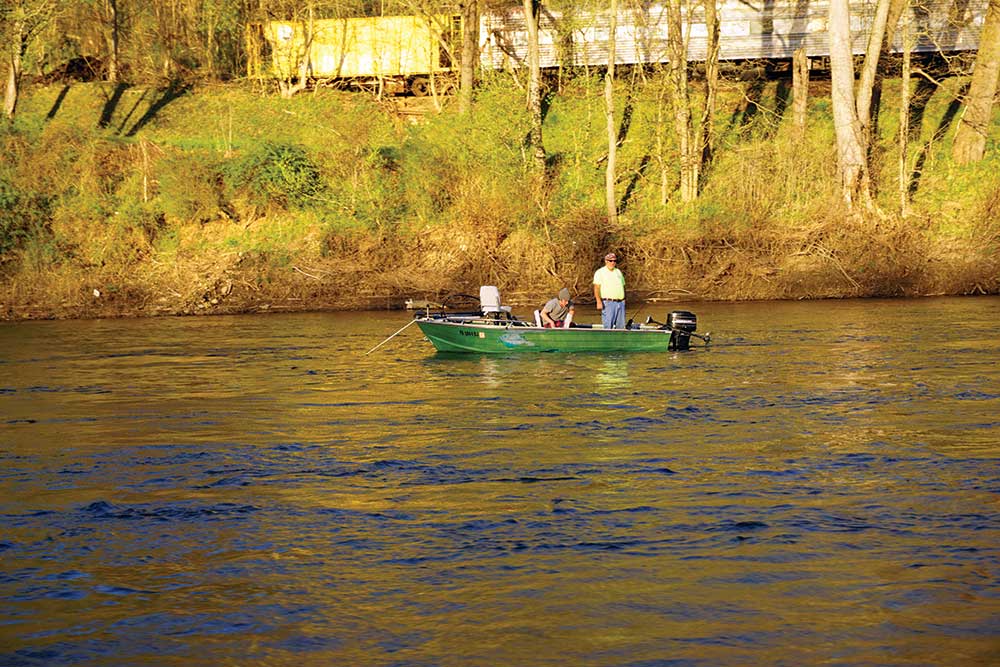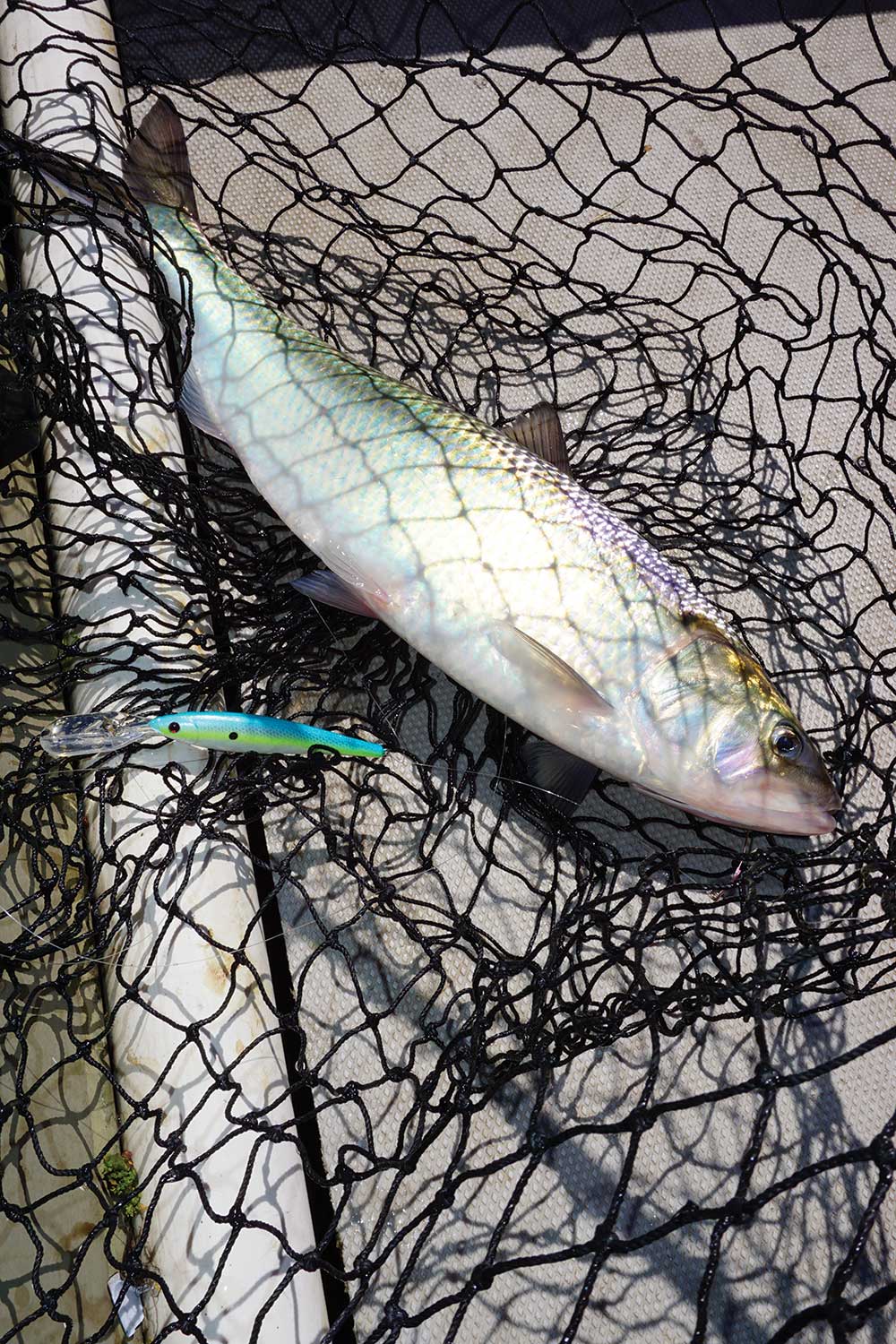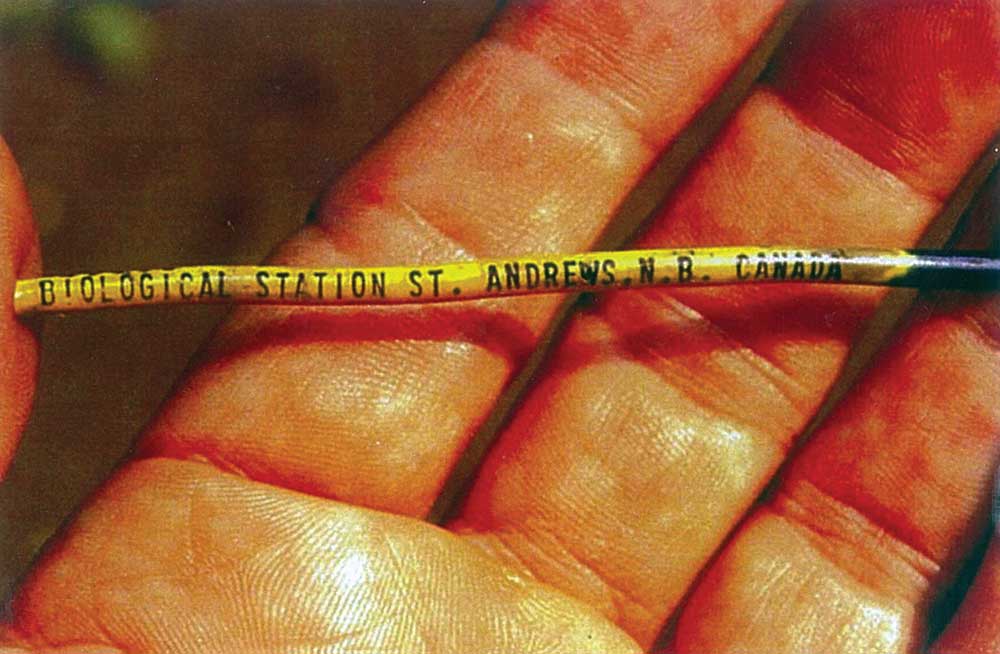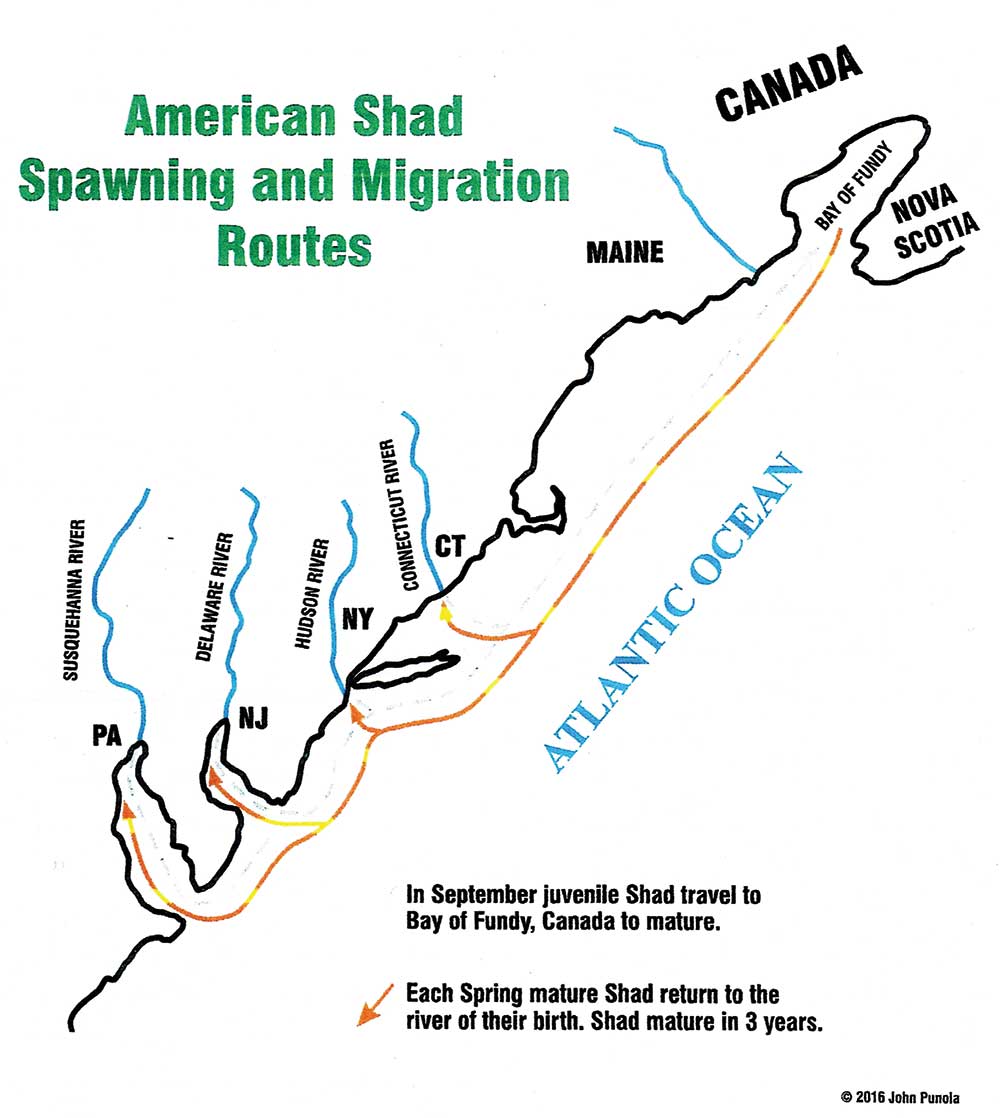
Days are longer, the sun keeps getting warmer, and we can relax knowing shad are in the Delaware River!
As shad journey down the East Coast, they follow a precise journey to reach the Delaware River, which provides them with favorable spawning waters.
For many centuries, shad, have followed their instincts traveling many miles and in the process of finding the pool of their birth. It’s a long journey with the present danger of colliding with any commercial fishing boats blocking their paths.
Suffice to say, now we can say the shad are well in route to the Delaware River; let’s just hope the continued growth of the arrival numbers remain on the upward path to another banner year for anglers.
Back in early January, I was gathering my shad notes from last spring in preparation for creating my 2020 report. I’d been asked several times during the offseason about the prospects for the 2020 spring shad spawning run. One angler told me he had quite a good time last spring and averaged about a dozen shad caught and released every trip while fishing from a boat. He said he suffered through the days of few or no catches, but never lost enthusiasm for the thrill of being on the Delaware River when the shad schools were in the river and plentiful.
Another angler I spoke with told me last year was his third season of shad fishing and he only managed three fish while shad fishing from several locations. He said he was aware that some anglers were catching some high numbers and felt he must’ve been doing something wrong. He only went to the Delaware River twice. I told him what I have told others, likening the success of any fishing to the willingness to learn as much as you can, having patience, and making as many trips as possible. Basically, we learn by doing.
Shad March In
Mother Nature can be kind to shad lovers; she makes sure the shad follow her tradition to keep on time with the migration schedule, which will soon bring them to the Delaware River. That said, here is my 2020 prediction – there will be a large number of shad arriving when and where they are supposed to be. I forecast the continued upward trend of the adult shad, based on the large number of juvenile shad that were hatched in the spring of 2017. Now let’s just cross our fingers that Mother Nature truly is kind to us, with ideal weather and no flooding and high muddy water.

Shad have been returning to the Delaware River since the 1500s to spawn in its attractive waters. Historically shad were recorded to arrive about the 1st of April, making themselves present through the month of May. If you happen to have a shad bush on your land, look for it to bloom about April 1. Early settlers used the incoming shad as a food supply and also as a fertilizer. There were also some Native American villages that appeared along the banks during the spawning period.
April 1 – or at least early April – has been the standard for shad anglers to begin fishing. While I have often enjoyed good catches at that time, back in the spring of 2009 something happened. We were having an exceptionally warm spring when I decided to take a trip to the Delaware River to check out the water conditions and take a few photos. I arrived at a favorite shore location on the New Jersey side, and found the weather and water conditions in perfect shape. It was St. Patrick’s Day and I had brought along my fishing gear including shad lures and wanted to make a ceremonial cast to officially open the season before departing for home.
I made a perfect cast and proceeded to retrieve a colorful chartreuse 1/4-ounce shad dart when I felt a solid strike and felt a heavy fish on the line. I figured it was a hefty walleye and slowly worked the fish towards my net. I was thrilled to see it was a nice male shad. I admired the fish in my net and knew it was from an advanced group of males that precede the big schools of male and female shad.
I kept fishing and hooked and landed eight more feisty male shad, all aggressive and well-hooked. I departed the river a very surprised and happy fisherman. The following weekend I returned to the same location and caught 10 more shad, all males. I then visited several other favorite locations about a mile upstream, but failed to catch any more shad. I chose not to publicize my catches since these were the early running fish, small numbers and well-scattered, but not the volume to encourage others to follow my lead.
If we have an unseasonably warm spring 2020 with a nice, clear water flow, you might want to try your luck early if you have a special place in mind. Bear in mind that March schools of shad are the early runners and will be moving upstream faster than the massive schools of male and female shad that will soon follow. Shad anglers further upstream beyond Port Jervis, NY have reported some occasional catches of shad in that part of the Delaware River during the month of March, telling of shad moving fairly close to the shore.
An Incredible Journey
In the course of a conversation during the offseason, a fellow angler asked “where do our shad come from?” From my early days of shad fishing the Delaware River, I was told that our shad are from the waters of Florida and travel up the coast to enter the Delaware River. I believed it until I found out for myself that these Florida shad are hickory shad, a much smaller member of the shad family. Then in the late 1980s while fishing alone, I caught a big female shad late in the afternoon that contained a brightly colored plastic tag. My tagged shad was caught far upstream near Milford, PA about 15 feet from the shore, in roughly 6 feet of water. It had been tagged in St Andrews, New Brunswick in Canada by our northern neighbor’s fisheries department. The roe-laden female measured 26 inches in length, and tipped scales at 6 pounds.
I journeyed to Canada to visit the fishery biologist working at St Andrews where I learned that the Canadians had been tagging shad for several years, using different colored plastic tags and changing colors every year. My shad had been tagged and released by the Canadian team into the Bay of Fundy in New Brunswick. Once released, the shad joined a departing school of fish on its journey along the coastline. This particular shad skipped past the entrance to Delaware Bay while continuing south, where it was eventually caught and released on an unnamed river in North Carolina. The fisherman who caught the shad did not remove the tag but did note the information and notified the Canadians. The shad survived the journey and eventually made the return trip back to the Bay of Fundy.

Later that same fall, the shad again found itself in a large net in the Bay of Fundy. The tag was still intact, was then removed and replaced with a bright new tag and released again. The following spring my shad, carrying its new tag, chose to join a large school of shad destined for the Delaware River. I caught that fish on the first day of April near the town of Milford, PA. The tag was partially damaged and loosely attached, falling free while the shad thrashed about in my net. Fortunately it fell near my boot and I was able to retrieve it before it washed away.
The Canadian researchers concluded their shad tag study shortly after my trip, satisfied with the results. They assured me there are a lot of shad returning to American rivers to spawn, and the shad know where they are going. Studies showed that shad leaving Bay of Fundy will always return to the river where the shad was born.
The Canadian biologist gave me a hand drawn map showing the journeys of the shad from the time it departed the Bay of Fundy to all the recorded destinations in New England, with the Delaware River being their longest journey. It’s an interesting reminder of just how great this fishery is.

| $20,000 SHAD |
|---|
| From April 23-26, the 10th Anniversary Bi-State Shad Tournament will be held along the Delaware River, with payouts to 10 places for overall shad, and top four fish each day.,The top fish in 2019 was a 5.444-pound shad for angler Kurt Anklam good for $20,000.,All participants in the Bi-State Shad Tournament (PA/NJ) also qualify for a chance to win a boat package sponsored by Mayberry Marine, Yamaha Outboards, G3 Boats, and Bear Trailers. For application and details visit shadfishingcontest.com. |



